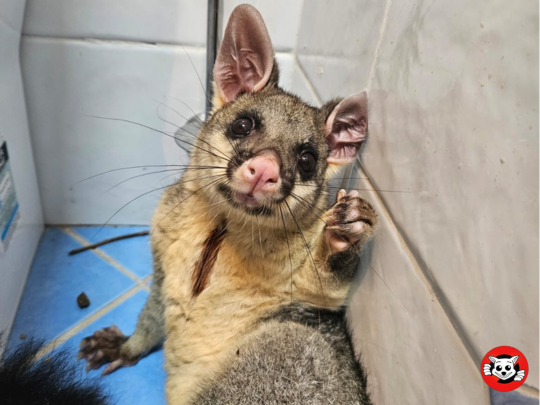As Australian homeowners, we often share our surroundings with various wildlife. While this cohabitation can be harmonious, there are times when critters like possums find their way into our homes and become unwanted guests. Recognising the early signs of a possum infestation can help us act promptly and humanely, ensuring these creatures are safely returned to their natural habitat.
Here at Possum Busters, we’re committed to helping homeowners deal with possum issues in a kind and professional manner. This article will highlight some key indicators of a possum infestation and how to distinguish them from other pests.
Nighttime Noises
Possums are nocturnal animals, which means they’re most active after sunset. You may have a possum in your home if you hear scratching, thumping or scampering noises at night. These sounds may come from your roof or walls, as possums tend to favour these areas for nesting.
Distinguishing these noises from those made by other pests can be challenging. However, possums often produce slower, more deliberate movements than rodents’ quick, erratic scurrying.
Damage to Your Home and Garden
If you’ve noticed damage to your home or garden, this could be another sign of a possum infestation. Possums can cause various types of damage as they search for food and establish nesting sites. This could include torn insulation, gnawed wires, or damaged vents in your home. You might notice half-eaten fruits and vegetables or uprooted plants in your garden.
The type of damage can often help determine if a possum is the culprit. For instance, possums might leave larger, more noticeable marks on structures due to their size. In your garden, they eat more plants than other pests. They may also leave behind larger bite marks on fruits and vegetables.
Gnawed Entry Points
Possums are notorious for their ability to find ways into our homes, demonstrating an uncanny knack for exploiting any weaknesses in a building’s exterior. They often gnaw and claw through potential entry points such as roof edges, vents, or wall gaps. Over time, these initially small breaches can become significant access points for these creatures.
If you notice any signs of forced entry, it might indicate a possum problem. This could include visible damage to your property’s exterior, such as gnaw marks or torn materials. It’s also worth paying attention to unusual noises, like scratching or thumping, that might suggest the presence of an animal intruder.
The size and shape of the gnawed areas can help distinguish possums from smaller pests. Due to their larger size, possums tend to leave behind more substantial, irregularly shaped entry points. These can be quite noticeable, particularly if they’ve been used repeatedly over time. It’s not uncommon to find signs of possum fur caught in these areas, further corroborating the presence of a possum intruder.
Nesting Materials
Discovering a nest within your home can be startling, but it’s a significant sign of possums. When they make themselves comfortable on your property, they often gather materials like leaves, twigs, or insulation to create cosy and warm nests. They’re resourceful creatures that can use almost any material available to them.
Unlike the neat, compact nests of birds or the tiny, hidden nests of rodents, possum nests stand out due to their size and messiness. This is reflective of possums’ larger size and less meticulous nature. They’re often found in secluded spaces like roof cavities, tree branches, or tucked away corners of your home, places that provide warmth and protection and are out of reach from potential predators.
A distinctive smell can also identify possum nests. These creatures have a musky odour that can permeate their nesting area, providing another clue to their presence. You’re likely dealing with possums if you encounter a large, messy nest with a strong, unfamiliar scent.
Visible Possum Activity
Possums are largely nocturnal creatures, meaning they’re most active during the evening and night. During these times, they venture out searching for food and other resources. If you suspect a possum infestation, one of the most straightforward ways to confirm your suspicions is to observe the exterior of your home during the evening hours.
Look for possums moving along power lines, fences, or trees. These animals are adept climbers and often use these high paths to navigate their environment safely. You might also notice them rummaging through your garbage cans or garden, looking for food.
Possums have a distinct way of moving, unlike most other small mammals. They’re larger than most rodents and move deliberately and steadily. Unlike rats’ quick, darting movements, possums tend to take their time exploring their surroundings thoroughly.
One unique feature of possums is their prehensile tail. They use this versatile tail as a fifth limb, helping them balance while climbing and carrying small objects. Seeing an animal using its tail this way strongly indicates that it’s a possum.
Remembering that while observing possum activity can help confirm an infestation, trying to handle or remove a possum yourself is not recommended. Possums are generally non-aggressive, but like wild animals, they can react defensively if threatened. Additionally, they can carry various diseases that can harm humans and pets.
Contacting professionals like Possum Busters is best if you spot possum activity around your home. They offer humane removal services, ensuring that the possums are not harmed during removal. This way, you can resolve your possum problem without causing unnecessary harm to these beneficial creatures.
Possums play a vital role in our ecosystem by controlling pests and contributing to biodiversity. However, when they venture too close to our homes, they can become a nuisance and even a potential health risk. By watching for signs of possum activity and enlisting professional help, we can harmonise with these creatures, respecting their role in nature while safeguarding our homes.


